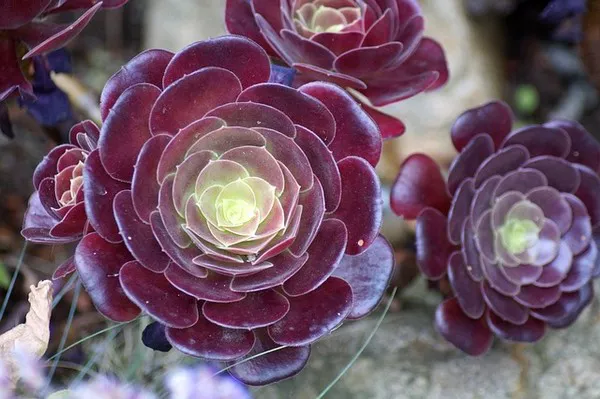Succulents, with their charming and diverse array of shapes and colors, have gained immense popularity as indoor plants due to their low-maintenance nature and unique aesthetic appeal. These hardy plants are well-suited for indoor environments, as they require minimal care while adding a touch of greenery to any space. In this comprehensive guide, we will explore the key factors involved in successfully caring for succulents indoors, ensuring that they not only survive but thrive in your home.
Choose the Right Succulent Varieties
The first step in caring for indoor succulents is selecting the right varieties for your space. While there are numerous succulent species to choose from, some are better suited for indoor conditions than others. Opt for varieties that are well-known for their adaptability and ability to thrive indoors. Popular choices include Echeverias, Haworthias, Aloe Vera, and Jade Plants. Research the specific care requirements of each variety to ensure you can provide the ideal conditions for their growth.
Provide Adequate Light
Light is a critical factor in succulent care, as these plants are adapted to receive ample sunlight in their natural habitats. When growing succulents indoors, it’s essential to replicate their sunlight needs as closely as possible. Place your succulents near a south- or west-facing window to provide them with bright, indirect sunlight. Rotate the pots periodically to ensure even light distribution and prevent your plants from leaning toward the light source.
If your indoor space lacks sufficient natural light, consider using artificial grow lights. LED grow lights designed for succulents can provide the necessary spectrum of light for optimal growth. Keep the lights on for 12 to 14 hours a day, allowing your succulents to receive the light they need.
Choose the Right Potting Mix
Succulents thrive in well-draining soil that prevents excess moisture retention. When potting your indoor succulents, opt for a specialized succulent or cactus mix, which typically consists of a blend of potting soil, sand, and perlite. This mix promotes good drainage, preventing the roots from sitting in water and reducing the risk of root rot.
Water Wisely
One of the most common mistakes in succulent care is overwatering. These plants are adapted to arid environments and have low water requirements. Water your indoor succulents only when the top inch of the soil feels dry to the touch. Use the “soak and dry” method: thoroughly water the soil until water drains out from the bottom of the pot, and then allow the soil to dry out completely before watering again.
During the dormant winter months, succulents require even less water. Adjust your watering frequency accordingly to prevent waterlogged soil, which can lead to root rot and other fungal issues.
Maintain Proper Humidity Levels
Indoor environments, especially during colder months, can sometimes become too dry for succulents. While succulents are drought-tolerant, they still appreciate some humidity. To maintain adequate humidity levels, consider using a humidity tray or a room humidifier. Placing a shallow tray filled with water and pebbles near your succulents can help increase the ambient humidity around them.
Temperature Considerations
Succulents generally prefer moderate temperatures, ranging from 60°F to 80°F (15°C to 27°C). Avoid exposing your indoor succulents to extreme temperature fluctuations, such as drafts from heaters or air conditioners. During the winter months, protect your plants from cold drafts and frost by moving them away from windows at night or providing additional insulation.
Fertilize Sparingly
Succulents have modest nutritional requirements, and over-fertilization can harm rather than benefit them. During the growing season, typically from spring to early fall, feed your indoor succulents with a diluted, balanced, water-soluble fertilizer. Use a formula specifically designed for succulents and follow the recommended dilution instructions on the packaging. Fertilize no more than once a month, as excessive nutrients can lead to leggy growth.
Pruning and Maintenance
Regular pruning helps keep your indoor succulents in shape and encourages new growth. Remove any dead or yellowing leaves to prevent the spread of disease and maintain a tidy appearance. If your succulent becomes leggy or elongated, you can pinch or cut off the top to encourage branching and compact growth.
Prevent Pest Infestations
While succulents are relatively pest-resistant, they can still fall victim to common indoor pests such as mealybugs, scale insects, and spider mites. Regularly inspect your plants for signs of pests, such as webbing, sticky residue, or distorted growth. If you notice an infestation, isolate the affected plant and treat it promptly with natural or chemical remedies.
Conclusion
Caring for indoor succulents can be a rewarding and satisfying experience, as these resilient plants bring a touch of nature and beauty into your living space. By selecting the right varieties, providing appropriate light, using well-draining soil, watering mindfully, and addressing other key factors, you can create an ideal environment for your succulents to thrive. With proper care and attention, your indoor succulents can flourish, adding a touch of green elegance to your home for years to come.

